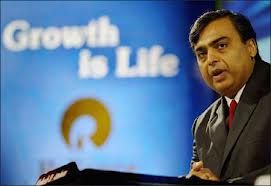 | « Back to article | Print this article |
 The Comptroller and Auditor General of India is likely to pull up the Directorate General of Hydrocarbons, as well as Reliance Industries, over an alleged hoarding of gas by the Mukesh Ambani-controlled company.
The Comptroller and Auditor General of India is likely to pull up the Directorate General of Hydrocarbons, as well as Reliance Industries, over an alleged hoarding of gas by the Mukesh Ambani-controlled company.
According to an official close to the development, in the coming financial audit report, to be tabled in Parliament’s Budget session next year, CAG will detail the slide in the government’s share in petroleum sector profits due to a drop in gas production.
Besides, the statutory auditor is also looking into the pricing of gas produced from RIL’s D1 and D3 fields.
“The report will clearly mention that the regulator failed in examining whether an intentional hoarding of gas by RIL caused a loss to the exchequer.
“Though there were some steps taken by DGH, those were not enough to ascertain if there was hoarding,” said a senior CAG official.
The development has come even as DGH is asking RIL, the private operator, to relinquish a large part of the KG-D6 block, besides eight discoveries worth over $10 billion.
So far, DGH has proposed a penalty of $1.8 billion for shortfall in production from KG-D6.
According to the official, the report might also look at whether or not the price of D1 and D3 gas should be raised to $8.4 a million British thermal unit till the company meets its earlier gas supply commitments.
In August, the auditor had sought the ministry’s views on the steps taken to ensure RIL supplied gas at the old rate of $4.2 an mBtu, in line with the production plan.
The total shortfall in production during four years to 2013-14 was 154 million standard cubic metre a day.
Compared with targets approved earlier, the production shortfall was 5 mscmd in 2010-11, 28 mscmd in 2011-12, 55 mscmd in 2012-13 and 66 mscmd in 2013-14.
According to 2006 development plan, D1 and D3 fields were to produce 61.88 mscmd from 22 wells in 2011-12 and 80 mscmd from 31